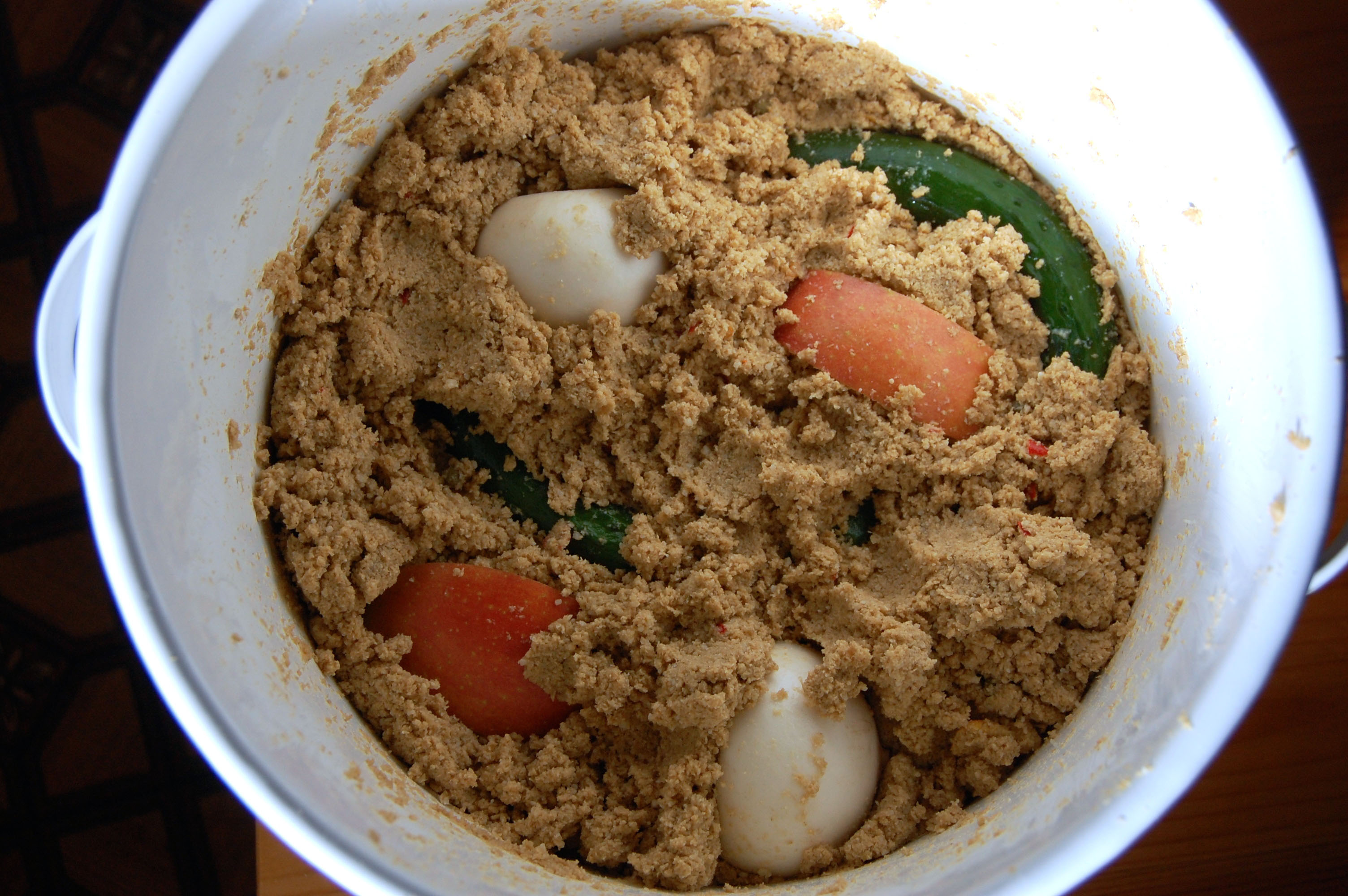For years, I'd resisted the urge to start my own nuka-pickle pot.
Although a great fan of nukazuke, those idiosyncratically earthy pickles fermented in rice-bran paste, I had concluded that the task of caring for the pickling medium was a responsibility best left to others. The nukadoko (pickling bed) is a living organism, one that requires constant monitoring to guard against spoilage. It must be aerated by hand daily to discourage mold, topped up with a mixture of fresh rice bran and salt once a month, and used — frequently — to maintain a careful balance of microbes. For someone cursed with a black thumb (cacti have perished on my watch), the challenges are considerable.
My friend, fellow food writer Hiroko Sasaki, had thrust me into the world of home fermentation when she returned from a research trip to Fukuoka with a batch of nukadoko starter for me. She'd traveled there to interview Chizuka Shimoda, whose shop, Chizuka, has been keeping the nukazuke tradition alive by producing picking beds inoculated with "mother" starters that have been passed down through the generations for the last 300 years. Shimoda keeps around 25 batches of pickling paste going at a time by adding new rice bran to older starters in a Solera-like system of maturation.

















With your current subscription plan you can comment on stories. However, before writing your first comment, please create a display name in the Profile section of your subscriber account page.